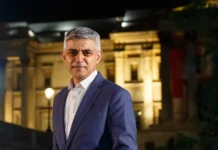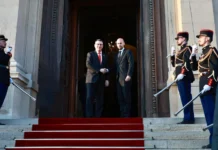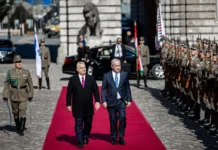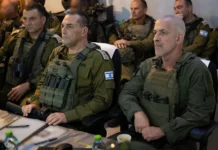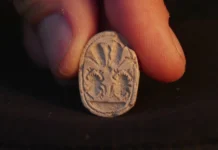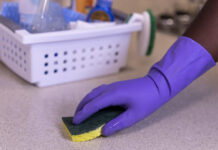I was pleased to recently receive a review copy of a wonderful memoir by Dr. Eugene J. Fisher, entitled A Life in Dialogue: Building Bridges between Catholics and Jews (MR, MEDIA BOOKS, St. Petersburg, Florida, USA ). Since Fisher is one of the pioneers of Catholic-Jewish Dialogue during the past 50 years, I was delighted to read this book. I found it to be a particularly interesting and informative book by a person who has devoted most of his professional and personal life to dialogue, as have I.
For full transparency, I confess that I have known and worked in partnership with Fisher for more than 25 years, and always enjoyed his collegiality and professionalism in the dialogue process. Not only that, but I discovered from reading this book that Fisher and I share a great deal in our personal biographies since we both came of age in the heady 1960s in the USA, where we both studied in New York City in the late 60s and early 70s, and we were both active in struggling for civil rights and against the wrongful war in Vietnam during that period.
Fisher worked for 30 years, from 1977-2007 for the U.S. Conference of Catholic Bishops, where he was their legendary professional liaison in charge of Catholic-Jewish Relations, which brought him into contact with virtually all Jewish organizations and Jewish professionals who worked in interreligious relations, including myself. He grew up in the Detroit area. As he put it, “To grow up Catholic in the 1940s and 1950s was to know you were ‘different’ and to have to prove things to yourself and to the world at large what others did not have to prove.” (p. 3) When I read this, I was reminded of how similar it was to grow up as a Jew in the 1940s and 1950s in the U.S.A. Both the Jewish and Catholic communities were somewhat “foreign” to Christian (Protestant) America at that time, and both went through similar identity struggles due to discrimination on the one hand, and the intense desire to assimilate rapidly into American society, on the other hand.
Fisher attended Sacred Heart Seminary College in the early 60s, from 1961-65 and he studied at the University of Detroit for a master’s degree as well. While he was in college, the Second Vatican Council (Oct 11, 1962-December 8, 1965) took place, and as he wrote in his memoir, “it could not have come at a better time for me.” The Council’s documents, which we read and studied and debated as they came out in stately procession from Rome, blew away my childhood impression of what Catholicism was all about and replaced it with a more dynamic sense of a community chosen by God to change history itself and to improve the lot of all humankind (p. 7). As it would happen for him—and for me, and for so many others in our field—the documents of Vatican II, especially Nostra Aetate (“In Our Time”), the major document which initiated dialogue between Catholics and Jews (as well as Catholics and members of other religions), would change our lives forever.
One of my major collaborations with Fisher was in the production of the film, “I am Joseph Your Brother”, which I produced in cooperation with the U. S. Conference of Catholic Bishops (USCCB) at that time, for ABC Television. The film, which was directed by Amy Kronish and Eli Tal El, was produced in 2001, following the historic pilgrimage of Pope John Paul II in March of the previous year to the Holy Land. Among other things, it enlightened both Jews and Catholics around the world about the revolutionary changes in Jewish-Catholic Relations in the contemporary period. Fisher, who appears in the film, was one of my main partners in dialogue in creating this unique educational product, which has been available for many years, along with an excellent study guide.
One of the most interesting chapters in this fascinating book is the one about the historical background of the Vatican document entitled “We Remember” concerning the Holocaust (chapter 15, pp. 85-107). I found this chapter particularly enlightening since I was present at a special seminar in the Vatican in March 1998 when this amazing document was released and I was privileged to participate in special briefings with Cardinal Cassidy and others about the meaning and importance of this document to the Catholic Church. While some Jewish professionals and laypersons felt that the document did not go far enough in its apology (some Jews seemed to feel that they could write Catholic documents better than the Catholics themselves!), I found it to be a revolutionary and ground-breaking document, which was another major milestone in the changing attitudes of the Catholic Church towards Jews and Judaism in our lifetime.
Fisher—with his own expertise on the Shoah clearly evident in this comprehensive chapter—goes to great lengths to explain all the background that led to this remarkable document. Perhaps the most amazing part of the story is the decision of the Catholic Church to use the Hebrew word teshuvah, meaning “repentance”, in the document, to demonstrate just how far the church was going in its historic process of reconciliation with Judaism and the Jewish people. In fact, I learned from this chapter that Cardinal Cassidy, who was the President of the Pontifical Commission for Religious Relations with the Jews for many years—and whom I hosted for a conference in Jerusalem and a reception in my home—first used the term teshuvah at a speech that he gave at a conference of Catholics and Jews at the International Liaison Committee in Prague in 1990. According to Fisher, Cardinal Cassidy said at that time: “The Church, all Catholics, must make a statement of teshuvah (repentance) for what Catholics did to and did not do for their Jewish brothers and sisters slated for extermination” (p. 90). In addition, in an importance footnote, Fisher, explained the various meanings of the word teshuvah, saying that teshuvah can mean ‘repentance’ and ‘conversion of the heart’, leading to ‘reconciliation’. He was able to do this, since—as I learned from reading this memoir— his PhD (from 1971) was in Hebrew Studies from NYU, and he has keep up his knowledge of Hebrew all these years, and has even gone back to teaching Hebrew Bible in “retirement” (a very active one).
In short, this is a precious memoir by a man who has lived the life of dialogue in his professional and personal life. It is also the story of one of the great theological revolutions of our time—by a veteran insider—who tells the story personally and poignantly of how the Catholic Church has entered into genuine dialogue with leaders and followers of the Jewish religion in unprecedented ways. It is a remarkable story, well worth reading, of a life devoted to this movement by one of the most knowledgeable people on this topic.

